I don’t believe in gurus. But if I did, my guru would be Stephen Cope.
When I read Stephen’s startlingly good Yoga and the Quest for the True Self about six years ago, I knew right away that it would change my life forever. I have been deeply immersed in thinking, writing, and breathing Yoga philosophy ever since.
Stephen Cope, MSW, psychotherapist, and senior Kripalu Yoga teacher is also the author of The Wisdom of Yoga: A Seeker’s Guide to Extraordinary Living.
When I had the chance to meet Stephen for the first time at Kripalu a few weeks ago, I was filled with both excitement and a little nervous anticipation. I was actually afraid I might be uncharacteristically tongue-tied.
My fears turned out to be groundless, of course. Here’s what happened:
~
BOB: Hi, Stephen. It’s an honor to welcome you to Elephant Journal. I’d like to start with a question I usually ask at the end. What gets you excited when you wake up and think about work in the morning?
STEPHEN: I’ve just finished a new book—it’s a contemporary commentary on the Bhagavad Gita. In it, I look at 11 great lives, and I use each one of them as an exemplar to one of the principles of the Gita. So, it’s really a book about how to use your life and your life’s work as a spiritual practice, and I have to say that’s what is lighting me up these days.
Basically, the book is divided into four sections—and it is organized around Krishna’s major teachings to Arjuna. The first one is “Find your Dharma,” and of course, that one is organized around understanding what your gifts are and understanding that you have a certain responsibility to your gifts, that there is a way in which whatever your gifts are, it’s exactly what the world needs.
The second teaching is “Once you’ve got some clarity about your dharma, then the calling is to bring everything you’ve got to it.” It doesn’t matter if you succeed or if you fail—whether you succeed or fail is none of your business, your job is to bring everything you’ve got to your dharma.
The third one is to “let go of the outcome,” and the fourth one is to “turn it over to God.” Krishna says, “Turn it over to me,” but the idea here is to dedicate your work to something bigger than you are.
I’ve used 11 exemplars—these are lives that really touched me.
I’m a classical pianist. Astonishingly enough, Beethoven knew about the Bhagavad Gita, and read the Bhagavad Gita.
BOB: I’ve stopped being astonished when I find out who was influenced by the Bhagavad Gita.
STEPHEN: It’s amazing.
BOB: Are you ready to be published?
STEPHEN: Yes, I am just working on the endnotes, and it’s coming out on Random House next year.
BOB: The Gita has been the focus of much of my writing on Elephant.
STEPHEN: It is the greatest scripture—there is no question about it. You know, I end the book with a chapter on Gandhi. Of course, I knew Gandhi’s life fairly well, but until I wrote it from the point of view of the Gita, I did not understand his life, you cannot understand his life. He was completely saturated with the Gita. He chanted the Gita on a daily basis. He read it, he wrote a great commentary on it.
BOB: Mitchell thought that essay was so important he included it as the one appendix to his translation of the Gita.
STEPHEN: Yes, that’s right, and for me, the title of my chapter on Gandhi is “Take yourself to zero,” where he talks about completely surrendering and abandoning yourself to your dharma in the world, which he did—so thoroughly that it was what gave him his power. He was not clinging to anything, so he was fearless.
BOB: I can’t wait to read your book.
STEPHEN: Knowing that you’re a Gita guy, I’ll have them send you a copy.
BOB: Just out of curiosity, what translation do you use?
STEPHEN: I use Barbara Stoler Miller’s translation, which I very much like, and also it is published by Bantam, so there is a little bit of an in-house thing. I also love Eknath Easwaran’s. His book on Gandhi, by the way, is brilliant.
BOB: I love his Upanishads, too.
STEPHEN: Of course he knew Gandhi, he went to study with Gandhi and he had a good deal of direct contact with him.
What I love about the Gandhi story is that Gandhi was a self-admitted coward as a young child. He was terrified of everything, he could not sleep in the dark and he was a complete disaster as a kid—and even as a young man.
The story is that his family’s nurse tried to help this kid who was so scared of everything—she taught him a chant, the Rama chant, and it was not until he began to chant that he actually began to get some courage, and of course he began a profound chanter. The chant interjected itself in his body and in his mind. Throughout his life, he chanted continually, internally, and it was actually the chant that gave him the power to start a community in South Africa.
He didn’t encounter the Gita until he moved to England to study law. He first read the Gita in English, and of course then he became a great exemplar of the Gita, so he actually was responsible for the rebirth of the Gita, which I think is an interesting fact.
BOB: Yes, it is interesting that he encountered it not in India, but in England.
STEPHEN: As a classical pianist, it was fascinating to me to discover Beethoven’s encounter with the Gita. He actually kept stanzas and verses of the Gita under a glass on his desk, right there in front of him. Not only that, he kept verses from the Upanishads.
Beethoven was a wide reader of spiritual literature. He wasn’t an intellectual, but he was interested in the point of practical spirituality about how to solve his problem, and it was a mental health problem. Beethoven was a profoundly abused child—he was tortured by his father, he was tied to a piano.
He was harshly dealt with by his father and he had a mother who was negligent, so the kid grew up with PTSD, and he spent a lot of his life trying to figure out how to recover from the internalized trauma that he had, and music was his lifeline.
So he completely committed himself to the dharma of music, it was the one thin thread that he had that he could grab on to—he undertook the task of mastering sonata form, which is the great form of western music. He took sonata form so far beyond anything that anybody else had ever imagined.
By the end of his life, he was writing stuff that nobody even understood, because his mind had become so developed by the power of mastery that he was seeing patterns that no one could even see, particularly in the late quartets, and the late sonatas.
I am a pianist, so playing those late piano sonatas is an absolutely transformative experience. You don’t know what is happening to you, but you know that something has transformed inside. It was his final surrender without any conditions—without any grasping for outcome—that produced his most sublime work at the end of his life that the world is now beginning to understand.
BOB: I wrote a poem called “Yoga and Mozart.” It starts with the line, “I’ve decided to dispense with Yoga, and just listen to Mozart all the time” and ends with “…but then again, why not have both? Are they not one and the same?”
STEPHEN: They both have an effect on the mind—it’s the same core spirituality.
BOB: Who are the other exemplars of the Gita in your new book?
STEPHEN: I used Jane Goodall as an exemplar of the gift, because she had a gift for animals from very early on. She is an example of somebody whose gift was promoted by her family and mirrored back.
Then I used Thoreau, and Whitman—mostly I focused on Whitman’s years as a nurse in the Civil War. He’d already written “Leaves of Grass,” and it had been hailed by Emerson. He was living in the afterglow of “Leaves of Grass,” and the country was beginning to melt down into the Civil War.
His brother, George, of course, went into the army and got shot. He went to find his brother in the hospital, and he encountered his dharma in the hospitals around Washington. He felt the suffering of these young men, and he felt the call to minister to them. He took on this new role, which he called “The soldier’s missionary,” and it’s beautiful. That’s real dharma.
BOB: That’s really interesting, because the average person, when they see Whitman in your list of 11, will think, “Oh, ‘Song of Myself’.” Some people have called it a modern-day Gita.
STEPHEN: In fact, his later poetry is all saturated with that, and from the Upanishad’s point of view, the body is transient and the soul survives. His lighter poetry was colored by his experience. It’s beautiful—his poem about Lincoln and a poem called “When lilacs last in the dooryard bloomed”—he became the bard of the meaning of the Civil War.
Then I used Robert Frost. I used Susan B. Anthony, who has been influential in my life because I grew up near her home in upstate New York—and Camille Corot, who was one of the world’s greatest landscape painters, who was another guy who just lived his dharma fully.
I used Marion Woodman, who is a good friend of mine. She is probably one of the greatest students of Jung in the 20th century. I used Beethoven, Harriet Tubman—who was a fantastic story of dharma, and Gandhi.
BOB: What a great collection—wow!
STEPHEN: It was fun to see how many of them were directly influenced by the Gita, and those who weren’t were all influenced by the same kind of doctrine that is taught by the Gita.
BOB: When did you first have the idea to write this book?
STEPHEN: I’ve been working on this book for years. I’ve been teaching the Gita for years in my weekend program. In teaching it, it forces you to go to the great stories of people who are living their dharma, so I began, years ago, to collect stories of people who were living their dharma, that I thought exemplified their dharma. They’ve always become my favorite stories. This collection does not include tons of the other stories that I have collected.
BOB: Well, this could be Volume One, right?
STEPHEN: This could be Volume One, I could easily write Volume Two right away, since I’ve got all these stories. Emily Dickinson is another one of my great exemplars of dharma, though she is not in the book. Eric Liddell, the great English runner, was a Christian minister and died in China in a concentration camp—a wonderful story of dharma. Our Kripalu community here is based on Karma Yoga. I don’t know how much you know about Kripalu.
BOB: A lot of what I know about Kripalu comes from reading your books repeatedly.
STEPHEN: Well, Swami Kripalu was one of the great kundalini yogis of the last century. When he came here to be with us for a couple of years just before he died, he took a look around, and said, “You western disciples should really be practicing Karma yoga.”
Kundalini yoga is a highly esoteric practice. Maybe one percent out of every 500 gets enlightened. But you guys do not have to be monks or nuns, you are going to be living in this world, the Gita should be your text and you should be doing Karma yoga. This whole Kriplau organization, and my exposure, were all based on how to live your life in the world.
BOB: As opposed to retreating from the world. The Gita doesn’t tell you to go meditate in the forest and escape the world, rather, to dive into the world with both feet.
STEPHEN: Exactly—the Gita itself was a huge breakthrough in Indian philosophy. It was a highly integrative scripture that really dealt with the problem of how to live in the world, whereas all the preceding scriptures were about how to withdraw from the world.
This makes the Gita extremely important for our world right now, and I am glad to see that it is showing up in corporate offices. The Gita appears to be replacing the Art of War. I got very interested in Patanjali and the Yoga Sutras probably because of my experience as a psychotherapist and psychologist.
The Yoga Sutras dispense of all religious archetypes, the storytelling—there is no story, no characters. It is really a very sophisticated cognitive psychology. That is what drew me to it. It is similar to Buddhadharma in many ways.
BOB: A strong Buddhist influence.
STEPHEN: Right. The Yoga Sutras come out of two lines in philosophy in the Indian subcontinent. One comes out of the Sankhya scripture of the seventh and eighth century BCE, and then there was this other line that eventuated out of Hinduism and the Gita, a much more social kind of philosophy, that eventuated in the Brahmans, the caste system, the poetry, the Upanishads.
So I was initially more interested in the really sophisticated psychology of the Yoga Sutras because I came out of Buddhism. I was in graduate school, I ran into Chogyam Trungpa Rinpoche in Cambridge, who was one of the great Crazy Wisdom gurus.
BOB: By the way, the editor-in-chief of Elephant Journal, Waylon Lewis, lives in Boulder. His parents were devotees of Trungpa. He grew up with him like an uncle, and that is why Elephant Journal has strong Buddhist roots. Waylon writes about the influence Trungpa had on him, and it still informs Elephant Journal in a big way.
STEPHEN: That does not surprise me, because Trungpa was one of the first guys to transmit Eastern teachings into American culture, and is still extremely influential. He was hugely influential on me. That’s what I ran into.
BOB: Is that the type of Buddhism you were practicing when you were practicing Buddhism?
STEPHEN: That is where I started. I was going to Graduate School at Boston College, and there was a Dharmadhatu center in Boston. I would sit there every Sunday on a Nyinthun, which is a day-long sit. It is where I first encountered dharma, and I was on fire with the dharma.
As soon as I ran into it, it was as if I recognized it—I sat all the time. It just clicked. The Christians call it the consolations of early spiritual life. I got lots of consolation because I got shamata, which is their version of concentration practice, very quickly. I would have deep levels of concentration—I would go into them very quickly.
So that was my first exposure to Buddhism. His sangha began to go into conflict during his increasingly ill health and some of his foibles. There was a lot of questionable activity.
BOB: I read about all of that.
STEPHEN: So I moved away from that, and I moved to Theravada Buddhism. Insight Meditation Society became my home. I came to know Joseph, Sharon, and Jack. I’m still good friends with them, I teach with them. So for many years, I haunted IMS and did Samadhi, Insight, Metta, and everything that they teach.
BOB: So how did you get into yoga from there?
STEPHEN: It was actually as a result of my deep Buddhist practice for years that I started getting into yoga because yoga was meant initially to prepare the mind and the body for sitting. So I encountered a friend who was into yoga.
I was, at that time, as you know, getting ready to go to a monastery. My friend brought me to Kripalu. I was very much steeped in Buddhist psychology, so that really set me up to be attracted to the Yoga Sutras, which was of course profoundly influenced by Buddhist teaching, except for the end states, which the Yoga Sutras explain differently.
The Insight practices, which are present in the Yoga Sutras, aren’t as well elaborated as in the Buddhist tradition. So if you really want to learn Insight practice, you have to go to Buddhism. It is not really fleshed out so much in the yoga practice. But nonetheless, because I got involved in yoga, and I came here, I really wanted to understand the Yoga Sutras.
All of the great medieval scriptures of Hatha yoga all say that in order to understand Hatha yoga, you have to do it in the context of Raja yoga. Everybody who I came to admire kept pointing back to the Yoga Sutras, and the Yoga Sutras have been such a black box for most of us in the American yoga world—it’s something we should read but we don’t.
BOB: Right. It’s read much more than the Gita, though. The Yoga Sutras get at least 95 percent of the attention when people think of ancient yoga texts. In many ways, the Bhagavad Gita is a much more comprehensive document about yoga.
STEPHEN: The Gitas were meant to be an integrative scripture. The core of Raja yoga is in there, but also karma (action) and Jnana (understanding). I’ve been reading the Gita since I got into Yoga, and I’ve been teaching it. I honestly think that I had to understand the Yoga Sutras first because a lot of the Gita is built on Raja yoga. You really have to understand the meditative point of view in order to understand what Karma yoga is built on.
So it worked out for me to start with the Yoga Sutras but now, honestly, when you ask what lights me up, I’ll say the Gita. How that is connecting for me right now is with my work at the Institute for Extraordinary Living. Because I am 62, I would have assumed that I would retire around now and be going off a little bit into a life of leisure.
BOB: Tell me about the work you’re doing here at Kripalu.
STEPHEN: Now I am so lit up by the possibility of yoga changing the world. I am actually in a position to do something about it. I really feel strongly Gandhi’s admonition to take yourself to zero, with your own obsessive concerns, with your own comfort, and so forth.
~
Continued here:
Yoga Can Change the World. Get Yourself Out of the Way! ~ Kripalu’s Stephen Cope, Part 2.
(Many thanks to Elephant volunteer Soumyajeet Chattaraj for his meticulous transcription of this recorded interview.)
~
Ready to join?
Hey, thanks so much for reading! Elephant offers 1 article every month for free.
If you want more, grab a subscription for unlimited reads for $5/year (normally, it's $108/year, and the discount ends soon).
And clearly you appreciate mindfulness with a sense of humor and integrity! Why not join the Elephant community, become an Elephriend?
Your investment will help Elephant Journal invest in our editors and writers who promote your values to create the change you want to see in your world!
Already have an account? Log in.
Ready to join?
Hey, thanks so much for reading! Elephant offers 1 article every month for free.
If you want more, grab a subscription for unlimited reads for $5/year (normally, it's $108/year, and the discount ends soon).
And clearly you appreciate mindfulness with a sense of humor and integrity! Why not join the Elephant community, become an Elephriend?
Your investment will help Elephant Journal invest in our editors and writers who promote your values to create the change you want to see in your world!
Already have an account? Log in.
 Share on bsky
Share on bsky
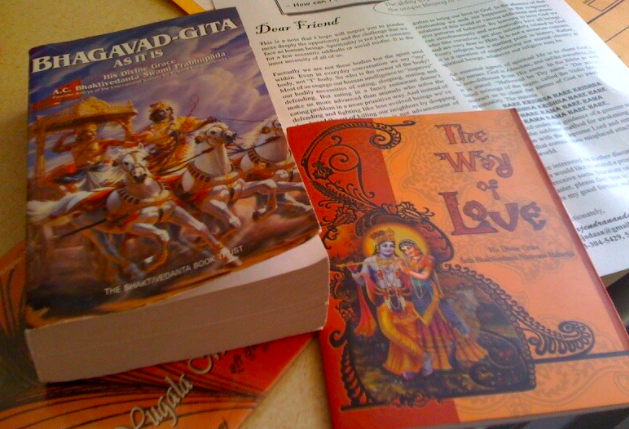

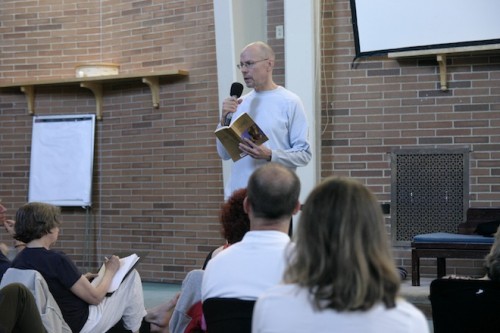
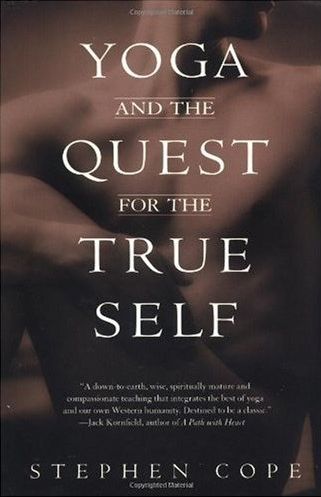

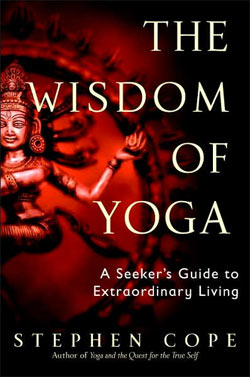


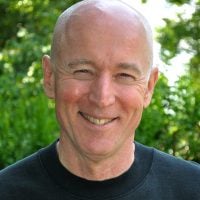




Read 44 comments and reply